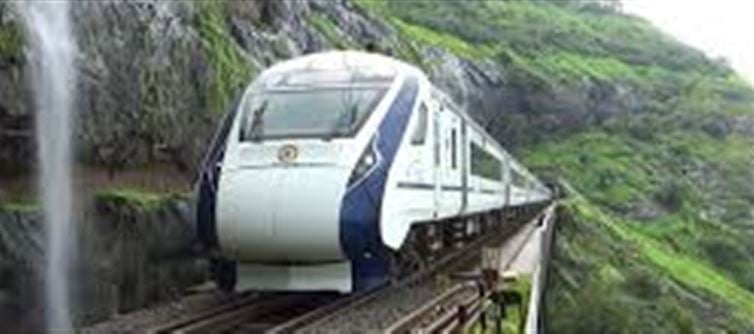
The maharashtra State cabinet has given the green signal for financial participation in the much-awaited Pune–Lonavala suburban railway third and fourth line project. This long-pending infrastructure upgrade is set to transform connectivity between pune, Lonavala, and ultimately mumbai, while also addressing concerns of growing passenger load.
Here’s a detailed breakdown of this major development and its wider implications.
1. Green Signal for a Long-Pending Project
For years, the Pune–Lonavala route has been struggling with overcrowded suburban trains and capacity constraints. The Cabinet’s approval marks a historic breakthrough, ensuring that the long-awaited third and fourth railway lines will finally move forward.
This approval comes after persistent efforts by Deputy Chief minister Ajit Pawar, who is also the Guardian minister of pune district.
2. A ₹5,100 Crore Mega Investment
The project, presented by Mumbai Railway Vikas Corporation (MRVC), carries a total estimated cost of ₹5,100 crore, which includes land acquisition expenses.
- Centre’s share: 50%
- State’s share: 50%
This equal financial partnership between the Central government and maharashtra Government shows the significance of the project for both regional and national connectivity.
3. Breaking Down Maharashtra’s Contribution
Maharashtra’s contribution of ₹2,550 crore will be funded jointly by the state and local bodies. The distribution is as follows:
- Pune Municipal Corporation (PMC) – ₹510 crore (20%)
- Pimpri-Chinchwad Municipal Corporation (PCMC) – ₹510 crore (20%)
- Pune Metropolitan Region Development Authority (PMRDA) – ₹765 crore (30%)
- State Government – Remaining amount
This model ensures that local stakeholders share responsibility, as the project directly impacts urban commuters.
4. Why This Project Matters for pune & Lonavala
The Pune–Lonavala corridor is one of the busiest suburban railway routes in western India. With thousands of passengers traveling daily for work, education, and business, the strain on existing infrastructure is immense.
Adding two more lines will:
- Reduce overcrowding in trains.
- Increase frequency and punctuality of suburban services.
- Provide seamless connections for passengers traveling toward Mumbai.
5. Boosting Pune–Mumbai Connectivity
While the project primarily addresses Pune–Lonavala traffic, its ripple effects extend to Mumbai. Faster, more reliable suburban services will:
- Ease congestion on Pune–Mumbai intercity trains.
- Support smoother movement of people and goods between two of Maharashtra’s largest cities.
- Enhance regional economic growth by strengthening mobility.
6. Ajit Pawar’s Key Role
The Cabinet’s nod is being widely credited to Ajit Pawar’s intervention. His efforts in pushing the proposal forward have been instrumental in finally resolving the funding hurdles.
This move aligns with his broader vision of making Pune a metropolitan hub with world-class infrastructure.
7. A Step Toward Sustainable Growth
By expanding railway capacity, the project encourages public transport usage over private vehicles. This has multiple benefits:
- Reduced traffic congestion on the Mumbai–Pune Expressway.
- Lower carbon emissions.
- More efficient commuting for daily passengers.
It aligns with the state’s goal of building sustainable, commuter-friendly cities.
8. cabinet Subcommittee on OBC Issues
Alongside the railway project decision, the cabinet also announced the formation of a six-member subcommittee on OBC issues. With two ministers from each coalition party, the committee aims to:
- Address the demands of OBC communities.
- Provide clarity and relief following the Maratha reservation decision.
9. maratha Quota Movement: A Parallel Development
The cabinet decision comes at a time when Maratha reservation activist Manoj Jarange ended his indefinite fast at azad Maidan, Mumbai. After accepting the government’s resolution on maratha quota, Jarange emotionally declared:
“Maratha vijay zala aj vijay zala, sukhi zala” (Marathas have emerged victorious today, and we are happy).
This development underscores the government’s parallel focus on infrastructure and social justice.
10. Final Word: A Win-Win for Maharashtra
The approval of the Pune–Lonavala third and fourth railway line project is a landmark decision that addresses the daily struggles of commuters while also paving the way for stronger Pune–Mumbai integration. Coupled with the state’s proactive approach toward community concerns, the Cabinet’s move highlights a vision of inclusive growth and progress.
Disclaimer:
The views and opinions expressed in this article are those of the author and do not necessarily reflect the official policy or position of any agency, organization, employer, or company. All information provided is for general informational purposes only. While every effort has been made to ensure accuracy, we make no representations or warranties of any kind, express or implied, about the completeness, reliability, or suitability of the information contained herein. Readers are advised to verify facts and seek professional advice where necessary. Any reliance placed on such information is strictly at the reader’s own risk..jpg)




 click and follow Indiaherald WhatsApp channel
click and follow Indiaherald WhatsApp channel